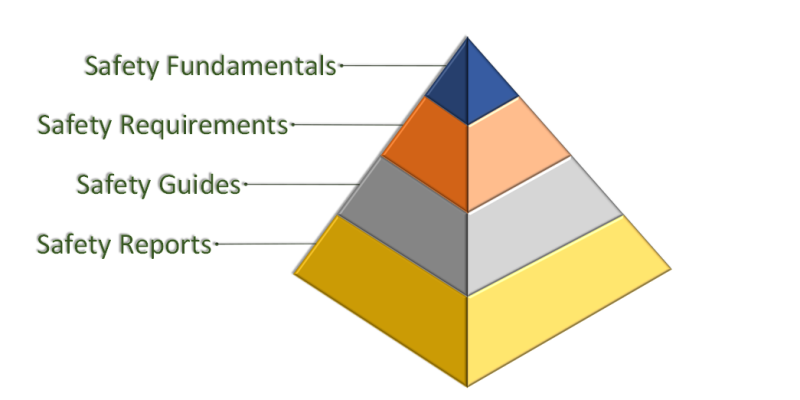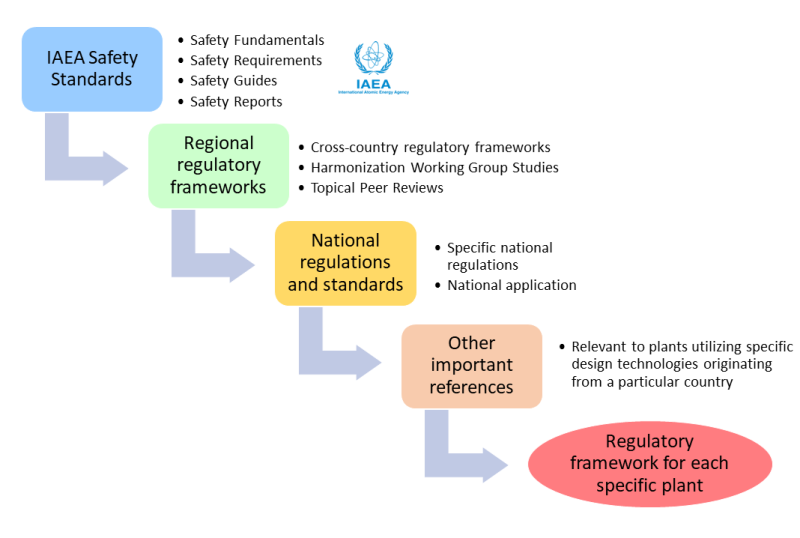Long-Term Operation (LTO) Regulatory and Guidance Documents
In the United States of America (U.S.A), the Energy section of the U.S Code of Federal Regulations (CFR) is addressed in Title 10, also known as 10 CFR. Within the code, Part 54 (10 CFR 54) concerns the rules and regulations of license renewal for nuclear power reactors, both initial license renewal (from 40 through 60 years of operation) and subsequent (in 20-year increments). Utilities are required to comply with these rules and regulations in order to obtain a renewed license from the U.S. Nuclear Regulatory Commission (US NRC). An Environmental Report is also required, following Subpart A of 10 CFR 51, to be submitted per the requirements of 10 CFR 54 to the US NRC.
The US NRC has established regulatory documents to guide the utilities through the license renewal application as well as the environmental report. In addition, industry groups such as the Electric Power Research Institute (EPRI) and the Nuclear Energy Institute (NEI) have also developed guides to assist utilities with the process.
Outside the US, local nuclear authorities around the world govern the license renewal process for the utilities within their individual areas of jurisdiction. The International Atomic Energy Agency (IAEA) also provides guidance and recommendations to those authorities. The most used guidance documents are listed in the following sections.
Regulatory and Guidance Documents[edit]
International LTO Regulatory Approach: Authorization Term[edit]
In general, on the international level there are two types of authorization terms of length for long-term operation (LTO) that are usually aligned with the initial authorization term: definite (limited) and indefinite types. The length of the authorization term varies from country to country. The governing regulatory body establishes this term length and operational framework.
First, there are countries with an indefinite duration for the initial authorization term and thus, the term length for LTO is also indefinite (e.g., France, United Kingdom, Switzerland, Sweden, Czech Republic, or Slovakia). The Nuclear Power Plants (NPPs) are allowed to continue operation given a sufficient level of safety is always ensured, and the applicable legal and regulatory requirements are met.
On the other hand, there are countries with time-limited/definite initial authorization terms (10, 30 or 40 years) and the term length for LTO is also defined (e.g., USA, Japan, Republic of Korea, Spain, or Finland). Furthermore, within the same country, the initial authorization term can depend on the type of the reactor. For instance, in the Republic of Korea, pressurized heavy water reactors (PHWRs) are given a license to operate for 30 years, whereas PWRs are given an initial license for 40 years.
The table below shows examples of the authorization term length in different countries.
Country |
Initial authorization term length type |
Initial term length* |
LTO term length* | |
|---|---|---|---|---|
Argentina |
Limited |
10 years |
10 years | |
Belgium |
Indefinite |
Indefinite |
10 years | |
Brazil |
Limited |
40 years |
10 years | |
Canada |
Limited |
10 years |
10 years | |
China |
Limited |
30 years |
20 years | |
Czech Republic |
Indefinite |
Indefinite |
Indefinite | |
Finland |
Limited |
30/40 years |
Individual | |
France |
Indefinite |
Indefinite |
Indefinite | |
Hungary |
Limited |
30 years |
20 years | |
India |
Limited |
5 – 9 years |
5 years | |
Japan |
Limited |
40 years |
20 years | |
Mexico |
Limited |
30 years |
30 years | |
Netherlands |
Indefinite |
Indefinite |
Individual | |
Republic of Korea |
Limited |
30/40/60 years |
10 years | |
Republic of South Africa |
Limited |
40 years |
Individual | |
Romania |
Limited |
30 years |
Individual | |
Russia |
Limited |
30 years |
Individual | |
Slovak Republic |
Indefinite |
Indefinite |
Indefinite | |
Slovenia |
Limited |
40 years |
10 years | |
Spain |
Limited |
10 years |
10 years | |
Sweden |
Indefinite |
Indefinite |
Indefinite | |
Switzerland |
Indefinite |
Indefinite |
Indefinite | |
United Arab Emirates |
Limited |
60 years |
Not applicable | |
Ukraine |
Limited |
30 years |
10/20 years | |
United Kingdom |
Indefinite |
Indefinite |
Indefinite | |
United States |
Limited |
40 years |
20 years | |
*Note: The term lengths are indicative and should be confirmed with each country’s nuclear regulator. | ||||
IAEA References[edit]
The role of International Atomic Energy Agency (IAEA) documents is to establish safety standards for the use of ionizing radiation, aiming to protect the health of workers, the public, and the environment. These documents provide recommendations for member states to establish and maintain robust safety measures in nuclear facilities, minimizing the risks associated with radiation exposure.
Figure 1-1 illustrates the hierarchy of the IAEA safety standards with Safety Fundamentals acting as a crucial reference for the formulation of the national legislation. The Safety Requirements might be employed for the establishment of the national regulation, and IAEA’s Safety Guides provide suggestions on specific subjects and can inspire the national guides. At the bottom of the pyramid of the IAEA safety standards are Safety Reports that, in general, provide guidelines, procedures, relevant aspects, methodologies, frameworks, or standards for particular topics of interests in the nuclear sector.
The operating organizations from many countries follow the IAEA’s Safety Standards and adapt Specific Safety Guides and Safety Reports Series related to LTO to their respective national frameworks.
In some countries, the national nuclear regulatory body issues specific Safety Guides and Instructions on LTO usually based on the IAEA’s SSG-48 “Ageing Management and Development of a Programme for Long Term Operation of Nuclear Power Plants”. Additionally, national regulators adhere their safety standards and LTO guidelines to the regulatory principles of broader regulatory organizations such as WENRA (Western European Nuclear Regulators Association) , ENSREG (European Nuclear Safety Regulators Group) , or Ibero-American FORO of Radiological and Nuclear Regulatory Bodies to harmonize regulations with other countries. Finally, countries that deploy foreign nuclear technologies usually follow and adapt specific standards from the country of origin of the technology (e.g., ASME XI). For instance, Spain´s Regulatory Authority (CSN) has mandatory Safety Instructions and Safety Guidelines for LTO which are based on 10 CFR 54 requirements as well as NUREG-1800, NUREG-1801, and NEI 95-10 guidelines for its USA reactors.
Figure 1-2 depicts the four levels of reference documentation that are used by some countries to establish the current regulatory framework for each specific NPP. Once the applicable regulatory framework is defined in each country, the NPPs could use industry standard guides such as EPRI references, listed above, to carry out the defined LTO tasks.
The IAEA documents listed in the Regulatory and Guidance Documents table are the most relevant references for LTO of NPPs.
Record of Revisions[edit]
| Number | Date | Description of Changes |
|---|---|---|
| 0 | 6/11/2024 | Initial version |

